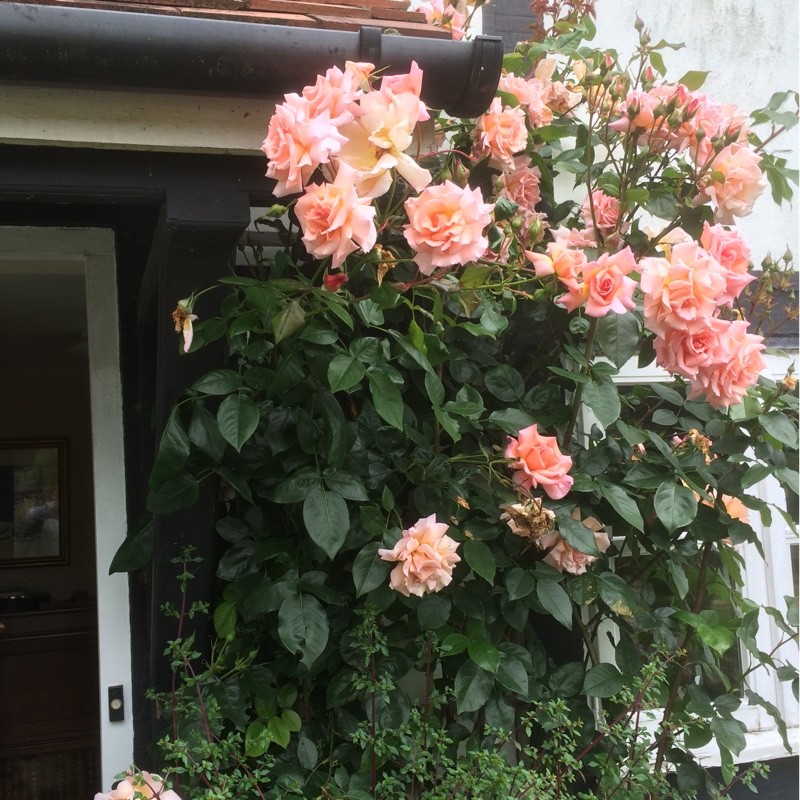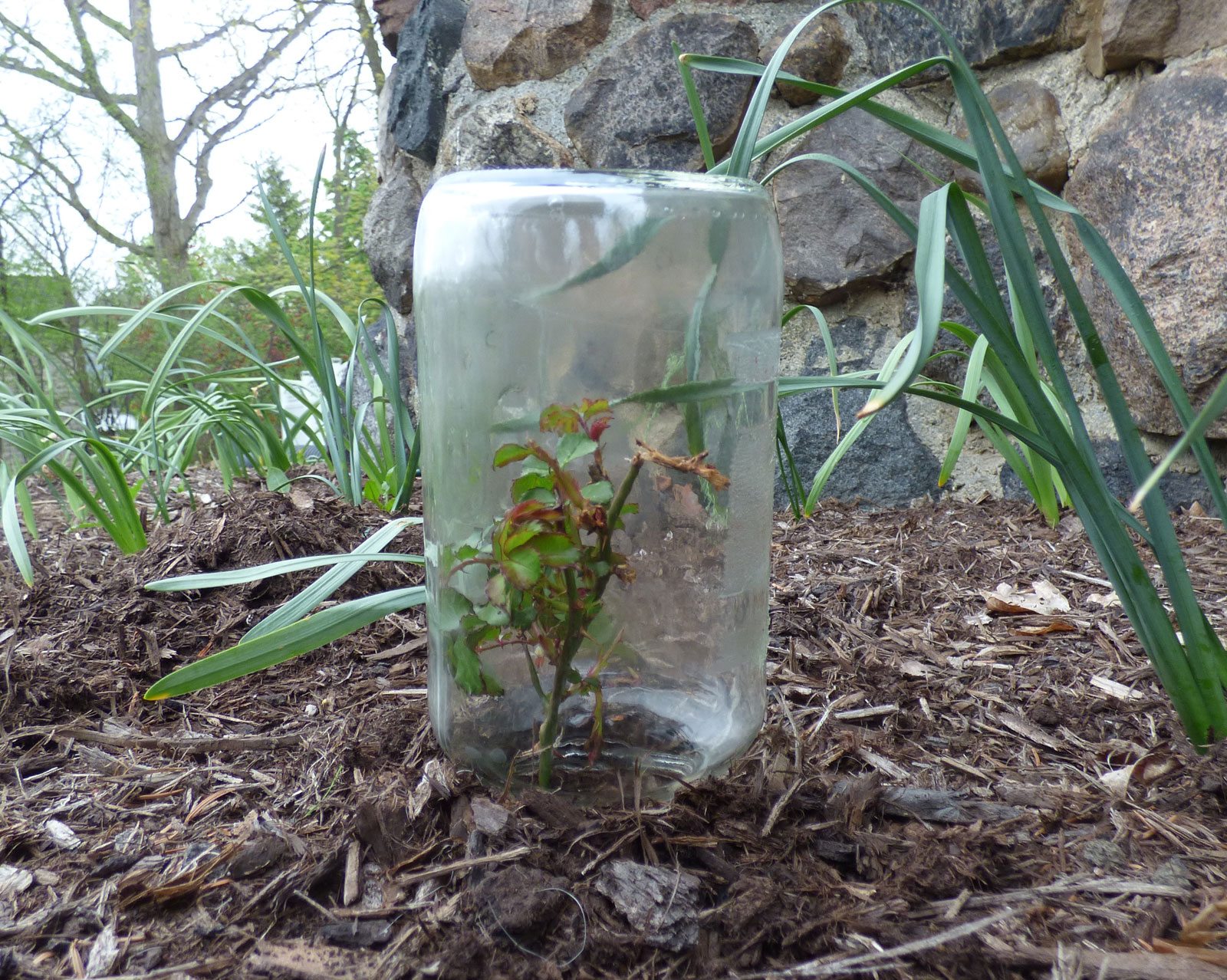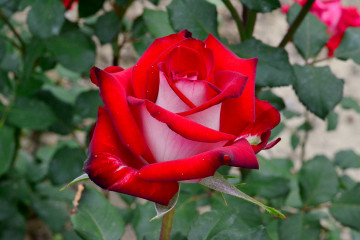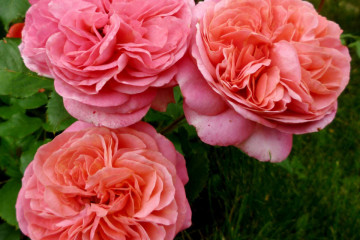Rose Compassion - variety description
Content:
A climbing rose of English selection under the names Compesion, or Belle de London, is a wonderful decoration of the garden. Its double flowers of a salmon shade up to 15 cm in diameter bloom on bushes up to 3 m high.
Rosa Compassion (Belle de Londres)
In 1973, the British company Harkness presented a new climbing variety to the public for the first time.
A tall bush with tough, strong lashes up to 2-3 m long has a dense foliage of dark green large leaves. The number of spines is average, but all are very sharp and rather large.
A double flower with a diameter of 12-15 cm has a shape that is classic for hybrid tea roses. The aroma is very strong and pleasant. A petal (there are up to 45 of them in a flower) with a wavy edge on the front side of a pure pink shade, and on the inside salmon with tints from orange to peach. Buds form at the ends of the shoots in an amount of 1 to 5 pieces.
Prefers partial shade with good aeration. For this reason, the trellises should be at least 0.5 m from the walls of the house or fence.The recommended planting density is 1 plant per 1 m2.
Advantages and disadvantages of the variety
Composition climbing roses have many advantages:
- In 1976, experts in the cultivation of roses assigned the ADR category to the variety, which is awarded only to those plants that are distinguished by their hardiness and resistance to diseases.
- Frost resistance - up to -34 ° С (zone 4).
- Repeated flowering, after the first wave in a couple of weeks, the second series of buds is distilled.
- Able to curl at any support - pergolas, columns, gazebos, trellises, etc.
- Resistant to powdery mildew, rust.
Disadvantages:
- Demanding to watering and feeding, without which the number of buds is reduced, and the flowers themselves become smaller.
- Very sharp thorns, therefore work with the bush is possible only with protective gloves.
- Formative pruning is required.
Use in landscape design
Climbing roses are specially bred for planting along various supports. Braiding them with their densely leafy and abundantly flowering shoots, the bushes create vertical landscaping and hide what they would like to disguise (some not the most beautiful view).
Another application is territory zoning, creation of galleries.
The best neighbors are ground covers and low-growing ornamental crops that tolerate frequent watering and sprinkling: hosts, stonecrops, petunia, verbena.
Growing a flower
It is worth buying a seedling in the nursery, since it is impossible to find varieties of English selection in other places. It is very likely to buy a similar hybrid somewhere on the market, but not distinguished by the inherent disease resistance of Compeshne.
Seeds are not available for sale. Only seedlings grown from cuttings or grafts for 2-3-year-old rosehip bushes are sold (such material has even higher frost resistance).
The optimal planting period is autumn (second half of September). Spring planting is carried out before bud break on the seedling, but after warming up the soil on the site to + 10 ° C.
The site is chosen slightly elevated and well lit.In the first half of the day, it should be well lit, while rain and melt water should freely slide off it without stagnation. The support is located close to the bush and has a height of at least 2 m.
How to prepare the soil and flower for planting
Sandstone, loam, swampy soil are categorically contraindicated. Fertile soil with high water permeability and loose loam are best suited. A bush with a closed root system does not need preparation. Seedlings with open roots are soaked in a mash made of water and earth at night before planting.
Planting procedure step by step
- The sapling is shortened: roots - up to 30 cm, whips - up to 20 cm.
- The distance between seedlings is from 1 m.
- A pit is dug to a depth of 70 cm, a mixture of sand and gravel is poured onto the bottom for drainage.
- The root collar is deepened by 10 cm (grafted - by 3 cm) for better frost resistance.
- After backfilling, the soil is immediately watered and mulched.
Plant care
The cultivar care procedures are the same as for all climbing roses.
Watering is carried out 1-2 times a week, depending on the weather. 10 liters of warm settled water are poured under each bush. Stop watering in early September.
During the warm season, with an interval of 2-3 weeks, nitrogen and phosphorus-potassium dressings are alternately introduced.
In the first year, it is recommended to remove all the buds so that the rose takes root as best as possible and grows strong shoots. From the second year, all wilted flowers are cut off. In the fall, 2 old shoots are cut out for better formation of new ones. In the spring, wild growth is removed below the scion site.
The climbing rose needs to be covered. Its shoots are removed from the support, bent to the ground and covered with agricultural cloth or burlap. Can be left on the support by wrapping it over with a covering material. Remove protection at the end of April.
Rose bloom Compassion
By the beginning of June, there is a rapid pasture of buds. They open gradually, delighting with a pleasant aroma and lush flowers for at least 3 weeks in a row.
The variety is referred to as re-flowering. This means that with proper care, the buds are driven out at short intervals until the very cold. If there are no new buds after the first flowering, this indicates that the bush lacks nutrients or watering.
During flowering, it is useful to carry out morning sprinkling. The wilted buds are removed so that the plant does not waste energy trying to set seeds. In September, the buds are removed so that the bush is better prepared for wintering.
What if it doesn't bloom? Lack of phosphorus and potassium in the soil will not allow buds to form. Fertilizers are applied at intervals of 2-3 weeks along with watering. It is also helpful to add wood ash to the topsoil.
Flower propagation
Propagated by dividing the bush in the spring before bud break, as well as vegetatively - by cuttings. Layers are buried by 10 cm, and planted only next spring. The seed method for the Compeshne variety is not suitable.
The optimal time for cuttings is June. At the same time, for the cuttings grown in the summer in the greenhouse, an intermediate planting place is assigned, since the survival rate after wintering is not 100%.
Detailed description
The grafting procedure is as follows:
- The stalk is cut with 2 internodes.
- All the lower leaves are removed, and the upper ones are shortened by half.
- Mix the sand with soil in a 1: 1 ratio and fill the containers.
- The cuttings are deepened by 2 cm and covered with a transparent cap.
- Keep for 2-3 weeks in a warm (+ 22-24 ° C) well-lit, diffused sun place.
Diseases, pests and ways to control them
Climbing roses are hardest hit by:
- Aphid. From it they are treated with "Aktara" and "Karbofos".
- Spider mite. Ascaricide "Neoron" helps.
- For fungal diseases (powdery mildew, gray rot) in the spring they are treated with Bordeaux liquid.
Climbing rose Compeshne is an easy-to-care ornamental shrub. Beautiful and fragrant flowers adorn the garden every year, becoming more beautiful. The variety should definitely pay attention to novice flower lovers.




















